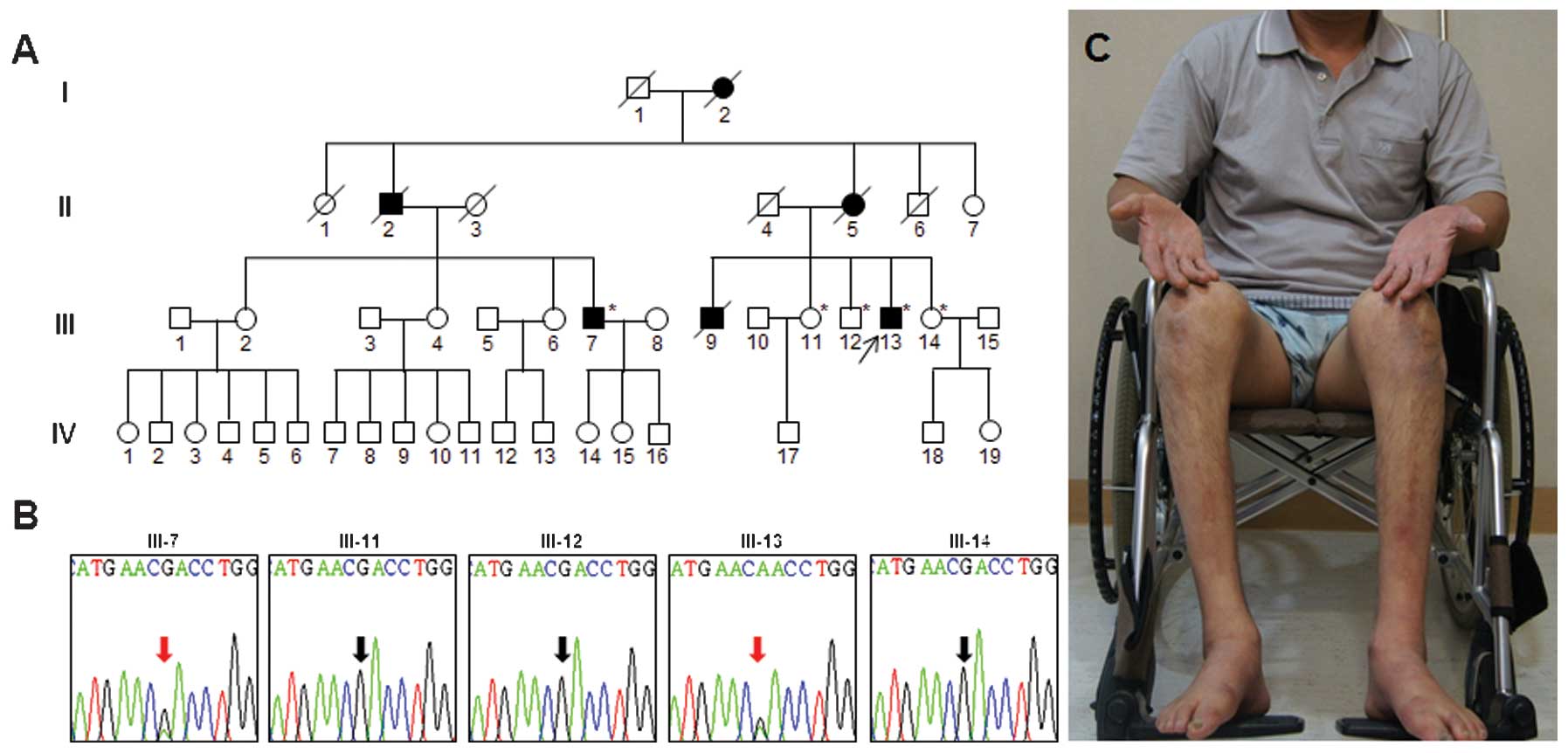|
1
|
Katsetos CD, Legido A, Perentes E and Mörk
SJ: Class III beta-tubulin isotype: a key cytoskeletal protein at
the crossroads of developmental neurobiology and tumor
neuropathology. J Child Neurol. 18:851–866. 2003. View Article : Google Scholar
|
|
2
|
Poirier K, Saillour Y, Bahi-Buisson N, et
al: Mutations in the neuronal β-tubulin subunit TUBB3 result in
malformation of cortical development and neuronal migration
defects. Hum Mol Genet. 19:4462–4473. 2010. View Article : Google Scholar : PubMed/NCBI
|
|
3
|
Demer JL, Clark RA, Tischfield MA and
Engle EC: Evidence of an asymmetrical endophenotype in congenital
fibrosis of extraocular muscles type 3 resulting from TUBB3
mutations. Invest Ophthalmol Vis Sci. 51:4600–4611. 2010.
View Article : Google Scholar : PubMed/NCBI
|
|
4
|
Tischfield MA, Baris HN, Wu C, et al:
Human TUBB3 mutations perturb microtubule dynamics, kinesin
interactions, and axon guidance. Cell. 140:74–87. 2010. View Article : Google Scholar : PubMed/NCBI
|
|
5
|
Jiang YQ and Oblinger MM: Differential
regulation of beta III and other tubulin genes during peripheral
and central neuron development. J Cell Sci. 103:643–651.
1992.PubMed/NCBI
|
|
6
|
Choi BO, Kim J, Lee KL, Yu JS, Hwang JH
and Chung KW: Rapid diagnosis of CMT1A duplications and HNPP
deletions by multiplex microsatellite PCR. Mol Cells. 23:39–48.
2007.PubMed/NCBI
|
|
7
|
Choi BO, Koo SK, Park MH, et al: Exome
sequencing is an efficient tool for genetic screening of
Charcot-Marie-Tooth Disease. Hum Mutat. 33:1610–1615. 2012.
View Article : Google Scholar : PubMed/NCBI
|
|
8
|
Chung KW, Hyun YS, Lee HJ, et al: Two
recessive intermediate Charcot-Marie-Tooth patients with GDAP1
mutations. J Peripher Nerv Syst. 16:143–146. 2011. View Article : Google Scholar : PubMed/NCBI
|
|
9
|
Birouk N, LeGuern E, Maisonobe T, et al:
X-linked Charcot-Marie-Tooth disease with connexin 32 mutations:
clinical and electrophysiologic study. Neurology. 50:1074–1082.
1998. View Article : Google Scholar : PubMed/NCBI
|
|
10
|
Shy ME, Blake J, Krajewski K, et al:
Reliability and validity of the CMT neuropathy score as a measure
of disability. Neurology. 64:1209–1214. 2005. View Article : Google Scholar : PubMed/NCBI
|
|
11
|
Choi M, Scholl UI, Ji W, et al: Genetic
diagnosis by whole exome capture and massively parallel DNA
sequencing. Proc Natl Acad Sci USA. 106:19096–19101. 2009.
View Article : Google Scholar : PubMed/NCBI
|
|
12
|
Bamshad MJ, Ng SB, Bigham AW, Tabor HK,
Emond MJ, Nickerson DA and Shendure J: Exome sequencing as a tool
for mendelian disease gene discovery. Nat Rev Genet. 12:745–755.
2011. View
Article : Google Scholar : PubMed/NCBI
|
|
13
|
Ng SB, Buckingham KJ, Lee C, et al: Exome
sequencing identifies the cause of a Mendelian disorder. Nat Genet.
42:30–35. 2010. View
Article : Google Scholar :
|
|
14
|
Lee SS, Lee HJ, Park JM, et al: Proximal
dominant hereditary motor and sensory neuropathy with proximal
dominance association with mutation in the TRK-fused gene. JAMA
Neurol. 70:607–615. 2013. View Article : Google Scholar : PubMed/NCBI
|
|
15
|
Nakhro K, Park JM, Hong YB, et al: SET
binding factor 1 (SBF1) mutation causes Charcot-Marie-Tooth disease
type 4B3. Neurology. 81:165–173. 2013. View Article : Google Scholar : PubMed/NCBI
|
|
16
|
Kim HJ, Hong YB, Park JM, et al: Mutations
in the PLEKHG5 gene is relevant with autosomal recessive
intermediate Charcot-Marie-Tooth disease. Orphanet J Rare Dis.
8:1042013. View Article : Google Scholar : PubMed/NCBI
|
|
17
|
Chung KW, Suh BC, Shy ME, et al: Different
clinical and magnetic resonance imaging features between
Charcot-Marie-Tooth disease type 1A and 2A. Neuromuscul Disord.
18:610–618. 2008. View Article : Google Scholar : PubMed/NCBI
|













